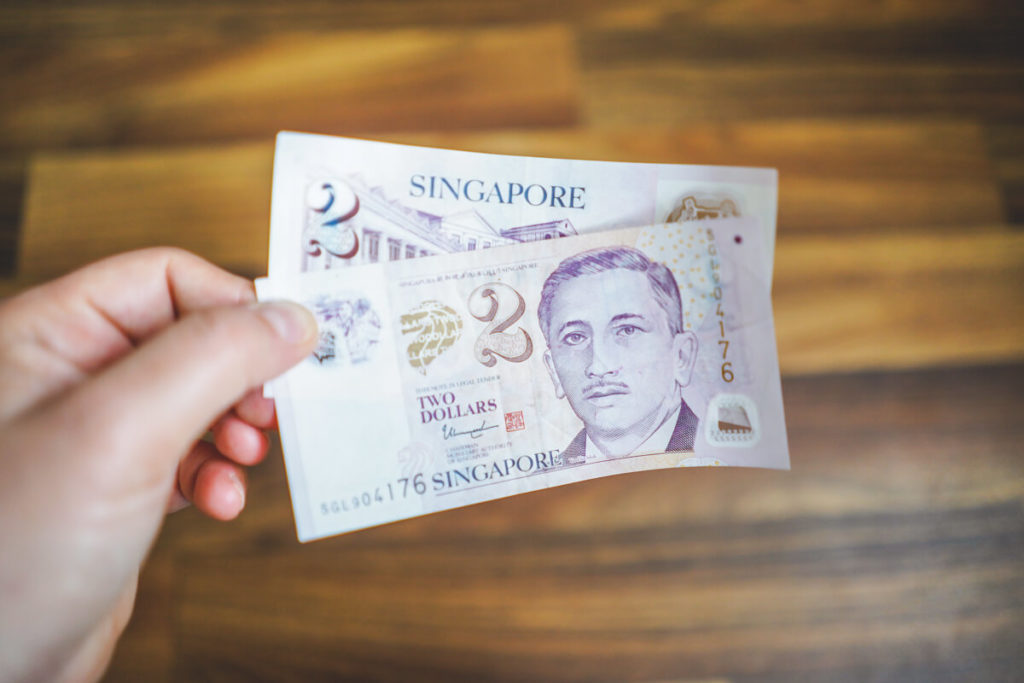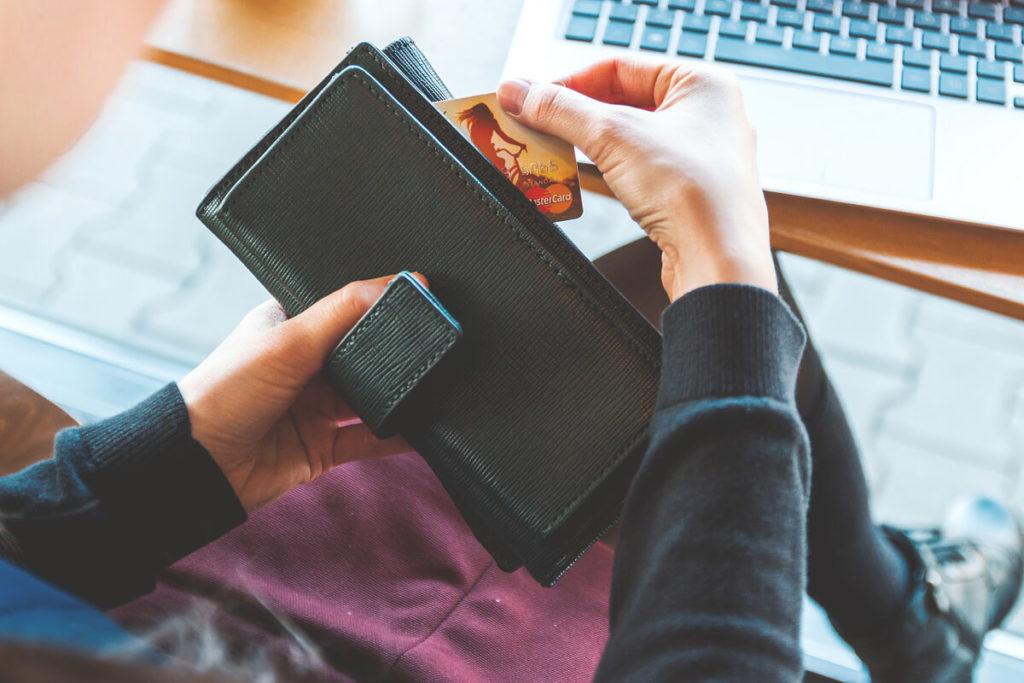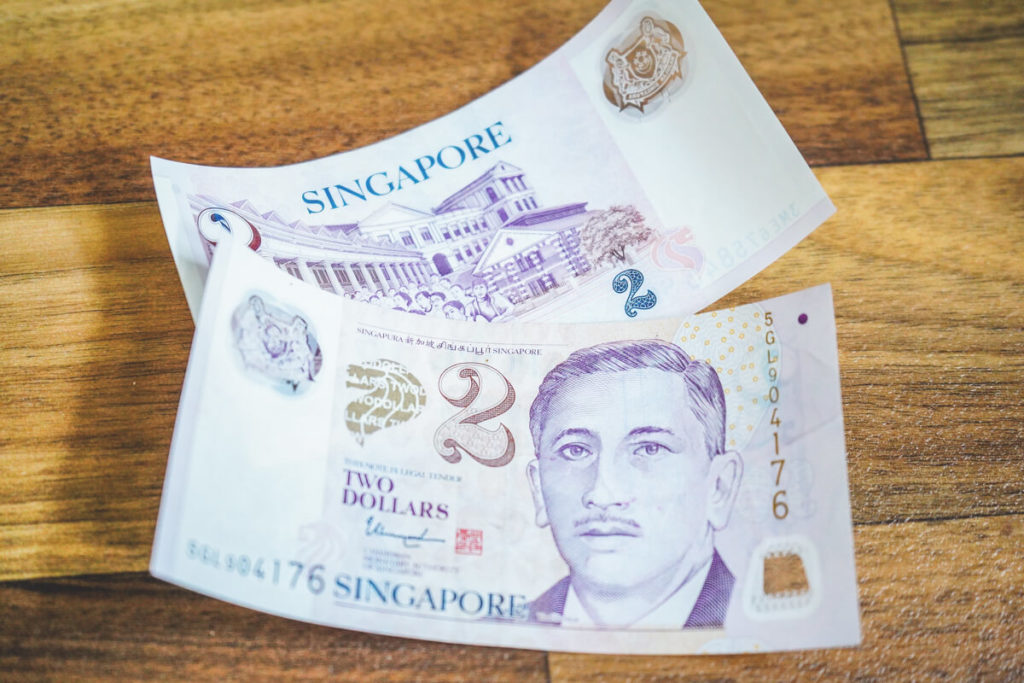Singapore, a fantastic metropolis in Southeast Asia, is not only known as a stopover destination, but also among backpackers and city travelers. Singapore awaits you with unique sights such as the world-famous “Gardens by the Bay” park with its colorfully illuminated Supertrees, which are up to 50 meters high. The view of the city skyline is also an absolute highlight. Singapore is considered one of the most expensive cities in Asia, but what exactly is the currency in Singapore? How many Singapore dollars do you get for your euros, and how does withdrawing money work in Singapore? More on this in the following article.
- Singapore currency
- Withdrawing money in Singapore
- Fees for withdrawing money
- Exchanging money locally
- Paying with a credit card
- The best credit card for Singapore
- Prices in Singapore
- Conclusion on the currency in Singapore
- Travel reading
Singapore currency
In Singapore, you pay with the Singapore dollar (SGD). The Singapore dollar is available in banknotes of 2, 5, 10, 50, 100, 1,000, and 10,000. In addition, coins of 1, 5, 10, 20, and 50 cents, as well as one dollar, are in circulation. Currently, you get about 1.50 SGD for 1 euro (as of May 2020). In general, the Singapore dollar is very stable compared to the euro.

In Singapore, people have a very high standard of living, which is why a stay in the city-state of Singapore is quite expensive for us Europeans. Singapore is regularly listed among the top 10 most expensive cities in the world. If you stick to local street food stalls, you can definitely eat relatively cheaply on your vacation. For an evening beer, however, you’ll have to dig a little deeper into your pockets, as a small bottle costs between €5 and €7.
Withdrawing Money in Singapore
In Singapore, you can expect a well-developed, nationwide network of ATMs. You can spot the ATM sign on pretty much every corner and in every mall from afar. Operation is very simple, and you can navigate through the program in English. At all ATMs in the city, you can easily withdraw money in the local currency, the Singapore dollar, using major credit cards from VISA, Mastercard, and American Express, as well as debit cards with the Maestro logo. You don’t need anything other than your card and PIN. After receiving the money, the ATM will print you a receipt so you can always keep track of your spending.

Cash Withdrawal Fees
If you withdraw money from an ATM or bank in Singapore using your credit or debit card, your bank in Germany will usually charge you a fee of €5 to €10, regardless of the amount withdrawn. Some banks also charge a percentage of the withdrawn amount, which will be shown as a foreign transaction on your bank statement. I would therefore recommend that you roughly calculate what you will need in the next few days before withdrawing money and then withdraw a larger amount.

To avoid unnecessary fees, you should definitely get a fee-free travel credit card. In the travel credit card comparison by Bolle and Marco, you will find four really good cards for your travels abroad. Before your trip, be sure to check with your bank whether fees apply for card payments abroad.
Exchange money locally
The city of Singapore, with all its highlights, is one of the most modern and best-developed cities in the world. The large airport offers all kinds of exchange offices where you can exchange your money immediately upon arrival. However, you generally get a worse rate at airports. So if you want to exchange money, you should only exchange a small amount. You can get a much better rate at licensed exchange offices, the so-called Licensed Money Changers, which you can usually recognize by a “Money Exchange” sign and can be found in most malls.
Some exchange offices in Singapore:
- Central Exchange Money Changer – Suntec City
- Evergreen Money Exchange – Golden Mile Complex
- Clifford Gems & Money Exchange – Raffles City Shopping Centre
- Silver River Money Changer – Marina Square Singapore
Paying by Credit Card
Paying with your credit card in Singapore is easy in hotels, supermarkets, shopping malls, and at tourist attractions, such as the famous Ferris wheel, and is part of everyday life in this ultra-modern city. Most places indicate this with a VISA or Mastercard logo at the entrance or cash register. However, you should also be aware that your bank will charge you a transaction fee of 1-4% of the respective invoice amount. This is yet another reason to apply for a free travel credit card.

However, you should still have enough cash with you in traditional markets, as credit card payments are usually not (yet) possible there. Another tip from me: It’s best to have two cards with you. Bolle and Marco lost three!! credit cards in Singapore alone. It’s best not to ask how that happened. If you only have one card with you abroad and you lose it or it gets blocked, you have a problem. Bolle and Marco, as well as I, always carry two or three cards with us. This way, we’re flexible and prepared for emergencies.
The best credit card for Singapore
As mentioned several times, a free credit card is always suitable for travel abroad. This allows you to easily withdraw cash (mostly) anywhere and also pay abroad. Bolle and Marco have been using the DKB* credit card for almost six years. If you’re an active customer, you can use the card to pay abroad and withdraw money from ATMs free of charge. It’s important to note that you must withdraw at least €50 per withdrawal; otherwise, fees will apply for your mini-cash option. Merchants or ATM operators may also charge additional fees for use. Unfortunately, DKB has no influence over this and does not refund this fee.

Hanseatic Bank* is currently offering some really good services. With this permanently fee-free credit card, you can withdraw cash free of charge at ATMs worldwide. Should ATM operators still charge fees, unfortunately, Hanseatic Bank has no control over this. This usually only occurs in Thailand and the USA. In addition, Marco and Bolle still carry the N26 Mastercard*. This is also free and has been a part of our travels for years.
Prices in Singapore
Singapore is one of the 10 most expensive cities in the world (Source: Deutsche Welle). However, that shouldn’t deter you from traveling, as the modern metropolis in Asia has a lot to offer. To give you a little insight into the costs, I’ve selected a few prices that might be useful for your trip.
- 1.5 liters of water – 1.20 €
- Small bottle of beer – 3 to 4 €
- Soft drinks 0.33 l – 1.20 €
- Coffee (espresso) – 2.50 €
- Meal in a restaurant (2 people) – 50 €
- Street food – 3 to 5 euros
- Simple hotel room – from 50 €
- Bed in a hostel – 20 €
- Bus ride – 1 to 3 €

Conclusion on the currency in Singapore
As you can see, the topic of currency in Singapore isn’t complicated at all. If you know in advance what to expect, planning your trip will definitely be a bit easier. Keep in mind that Singapore is generally an expensive place. Be sure to have enough money for your trip to Singapore. Bolle and Marco were only in the city for a stopover, but they still had a fantastic time in the metropolis. Whether it’s a week or two days – Singapore is always worth it.
Travel Reading
Want to learn more about the country and its people? Then check out the Dumont travel guide*. It contains 120 pages of comprehensive information about Singapore. We also have a summary of the best travel novels* right now.